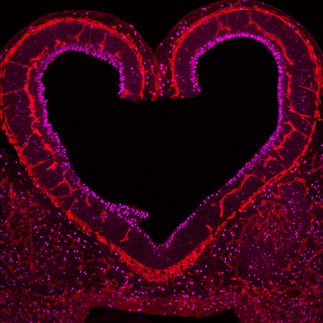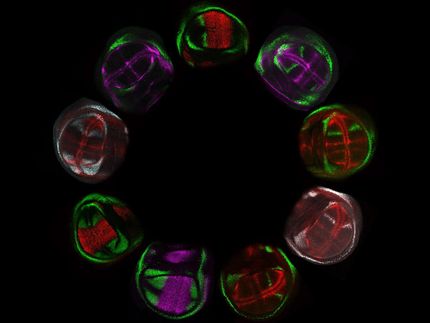Organic cation transporter CarT crucial for Drosophila vision
Advertisement
Scientists at UMass Medical School have identified a cell membrane transporter--CarT--that maintains vision in the fruit fly Drosophila by recycling the neurotransmitter histamine in the brain.
In mammals, histamine maintains wakefulness and regulates cognitive functions and food intake. Understanding how the brain maintains histamine levels for normal neurological functions may lead to new treatments for various sleep disorders, motor disorders, cognitive dysfunctions and certain psychiatric disorders associated with abnormal histamine regulation, such as schizophrenia.
"Intracellular histamine homeostasis has a huge impact on physiological functions associated with wakefulness and inflammation in skin and other peripheral tissues," said senior author Hong-Sheng Li, PhD, associate professor of neurobiology at the University of Massachusetts Medical School. "However, how mammalian cells recycle histamine to maintain it at a sufficient level remains unknown."
Histamine recycling is required for normally functioning vision in Drosophila, making it an excellent model for investigating the molecular biology of the neurotransmitter. When light falls onto the eye, the photoreceptors release histamine, which sends signals over the neural synapses to the fly's brain. Sustained neurotransmitter signaling is required to maintain vision (some estimates suggest photoreceptors would become depleted of histamine within 10 seconds without additional renewal). To achieve this homeostasis, histamine is constantly evacuated from the cells and recycled. Homeostasis occurs when nearby glia cells convert histamine into the non-bioactive metabolite carcinine and return it back to the photoreceptor, where it is made into histamine again and the process is repeated.
It hasn't been known, however, how histamine or its recycled product, carcinine, was moved across the membranes of the glia and photoreceptor cells. Using an RNAi-based screen to look for genes related to vision, Dr. Li and colleagues identified the protein coding gene CG9317, also known as CarT, in photoreceptors as a likely candidate for carcinine transport. Additional bioinformatics analysis revealed a strong analog to human transporter proteins in the SLC22 family.
To determine if CarT was indeed moving the recycled histamine between cells, Ratna Chaturvedi, PhD, a postdoctoral fellow, used a CRISPR/Cas9 gene editing approach to delete the CarT in photoreceptors in Drosophila. Flies lacking the CarT protein had an abnormal accumulation of carcinine and a reduction of histamine levels surrounding photoreceptors. This suggests that CarT is responsible for transporting the carcinine molecule from glia cells back to the photoreceptors. And disruption of this movement could adversely affect vision. Conversely, deletion of CarT in glia cells did not affect carcinine or histamine levels, suggesting another transporter was working to move the molecule through glia cells.
A behavioral experiment designed to test vision acuity in fruit flies lacking CarT in photoreceptors revealed that 90 percent of the tested animals were nonresponsive to moving objects, while 10 percent had severely delayed responses. Subsequent behavioral testing confirmed that the flies were effectively blind.
"Our work reveals the first membrane transporter involved in the recycling of histamine in the visual system of the fly," said Li. "There is evidence that this mechanism may be at work in mammalian cells as well. If it is, this discovery would help explain how animals maintain histamine levels and regulate diverse functions ranging from wakefulness and sleep to physiological functions related to the heart, kidney, stomach and intestines."
In mammals, neurons and non-neuronal cells express different members of the SLC22 transporter family. If these mammalian transporters also mediate the recycling and regeneration of histamine similar to how CarT does in Drosophila, it may be possible to design drugs targeting SLC22 transporters in neurons. This could help stabilize histamine levels in patients with related brain disorders such as schizophrenia and multiple sclerosis, without interfering with histamine functions such as inflammation in peripheral tissues.


























































